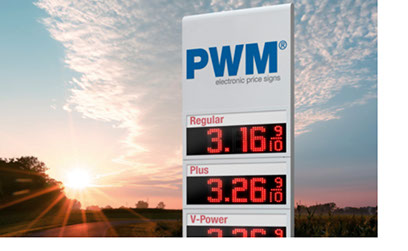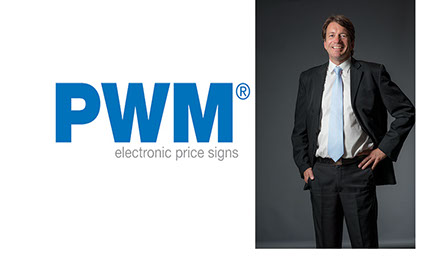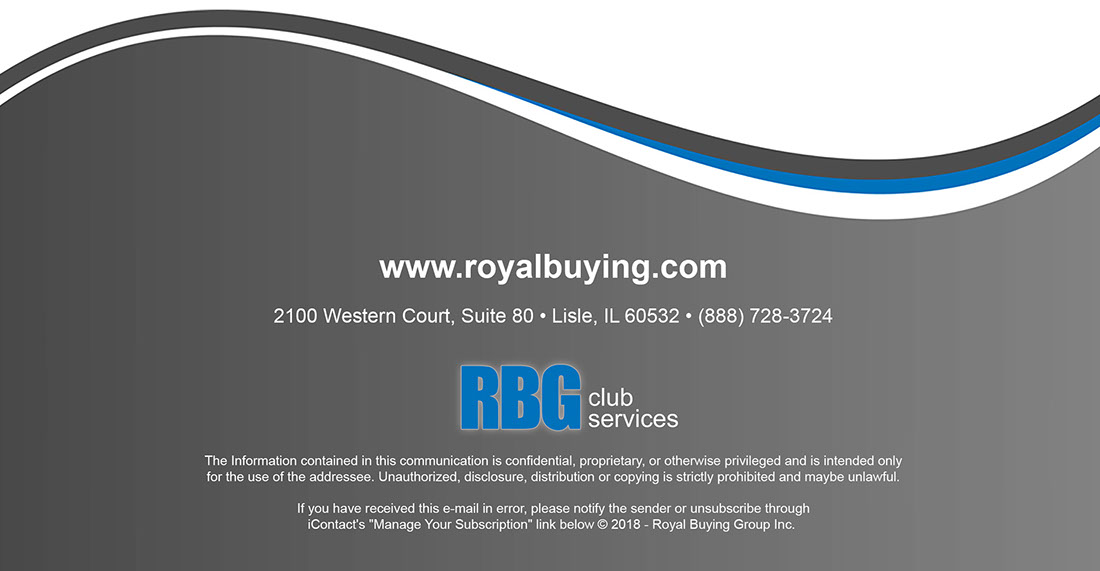Top 4 Tips for Troubleshooting Electronic Price Signs
By Wolfgang Manz, President & CEO, PWM Electronic Price Signs
November 2018
 When a sign isn’t displaying gas prices properly, impact on business is immediate. In this scenario, sign store owners work frantically to correct the problem as quickly as possible. Being prepared in advance for common issues can make all the difference, smooth out the process and get your sign back up and running in no time. So we asked PWM’s Operations Manager, Scott Honza to shared his insights about common issues and how to resolve them.
When a sign isn’t displaying gas prices properly, impact on business is immediate. In this scenario, sign store owners work frantically to correct the problem as quickly as possible. Being prepared in advance for common issues can make all the difference, smooth out the process and get your sign back up and running in no time. So we asked PWM’s Operations Manager, Scott Honza to shared his insights about common issues and how to resolve them.
Quick Tip #1: Check for disconnection
If a sign suddenly stops working, it’s not time to panic. “The majority of calls we receive are about bad communication between the control unit in the store and the price sign outside.” Scott recommended checking the physical connections. Anything from an unplugged cable to a loose wire might be the issue. These are quick fixes that most store owners can handle easily if they know where to look.
Quick Tip #2: Know how to make price changes properly
Often, customers just need guidance on how to make changes to their sign and are hesitant because they don’t want to make a mistake. Each sign manufacturer has their own instructions, but PWM’s are easy to follow. The store owner can open the control unit, enter the first selection, change the price with up/down arrows, hit enter, and move on to the next digit. It’s as easy as changing the time on a digital clock. “We are always happy to walk store owners through the process so they feel comfortable using the system.”
Quick Tip #3: Be cautious to avoid overheating
What if the whole sign goes down and then comes back online a few hours later? This is almost always an overheating issue. The power supply has a failsafe in place to shut down the sign if temperatures rise too high. With PWM’s heat tolerant signs, that doesn’t happen until temps reach about 175 degrees. Obviously, this makes overheating unlikely. But in locations like California or Nevada, the blazing sun can sometimes cause the sign to shut down. If this is a rare occurrence, it may be a tolerable nuisance. But if it is a repeated occurrence that’s impacting revenue for the gas station, it needs to be resolved. “This problem is fixed by addressing ventilation within the sign. We have a procedure we can use to create a kind of chimney effect to release the excess heat. It’s a highly effective solution with a success rate of well over 90%.”
Quick Tip #4: Know when to call the experts
If there is one line of digits that’s showing all 8’s and the rest of the screen is black, there may be something more serious wrong with the sign. According to Honza, this error usually indicates a problem with the power supply. In this case, a service call may be needed to repair, or replace the malfunctioning component.
PWM Is Here to Help
PWM’s German designed/manufactured price signs are heat, cold and water resistant—and built to last. With their modular structure, each part can be replaced independently to keep maintenance costs low. Most important, our technical team is available 24/7 at 866-796-7446 or support@p-w-m.com to answer questions, perform remote diagnostics, service your signs, and keep your business running.
How Price Signs Drive Consumer Behavior
By Wolfgang Manz, President & CEO, PWM Electronic Price Signs
April 2017
 How much does the typical American driver care about gas prices? How far will he go to get the cheapest gas around? The psychology behind gas shopping has been well studied. Drivers care about saving at the pump. It’s a behavior savvy convenience store proprietors use to their advantage.
How much does the typical American driver care about gas prices? How far will he go to get the cheapest gas around? The psychology behind gas shopping has been well studied. Drivers care about saving at the pump. It’s a behavior savvy convenience store proprietors use to their advantage.
According to a recent study by Market Force1, fuel price tops the list of factors that determine where drivers fill up the tank (79%). Driving out of the way to a station that is known for posting the most competitive prices is a common behavior as well. More than six out of ten consumers surveyed by the National Association of Convenience Stores (NACS)2 confessed that they would be willing to drive five minutes out of the way for five cents per gallon in savings. A shocking 38% said they would drive twice that far—even though the savings wouldn’t be offset by the amount of gas they burned on that trip. Apparently, it’s the idea of getting the best deal rather than the reality of saving money that fuels this quest for cheap gas prices.
60% of drivers choose a station based on the price
While about 10% of drivers use apps like GasBuddy to track down the lowest prices around, the majority of consumers are keeping their eyes peeled for roadside signage. About 60% of drivers choose a gas station based on the price posted on the sign (and that number goes up to 65% for those who refuel during the morning rush).
Armed with this insight into motorists’ fuel buying habits, gas station owners can take steps to ensure that their pricing stands out from the competition. In addition to ensuring their prices are posted correctly on gas apps, it’s even more critical to keep outdoor signage visible and up to date. This may involve changing the price multiple times per day based on bulk gas prices, the latest news reports, and what the competition down the street is doing.
Electronic SMD Signs offer competitive advantage
Digital SMD-LED signage is the technology of choice for gas stations seeking to stand out from the competition. SMD-LED displays have a number of advantages over older technologies. Electronic sign prices can be changed immediately without an employee having to leave their post and multiple gas stations can be updated from a central location. SMD digits are designed for especially high visibility from the road by day and night as well as superior durability. Finally, drivers know that digital signs are likely to be updated on a regular basis to offer up-to-the-minute pricing. Since gas buying behavior is all about the perception of getting the best deal, it pays to give the right impression.
ABOUT PWM
For more than 35 years, PWM has been at the forefront of the electronic price sign industry, working exclusively with convenience store owners. As a privately owned global player, PWM has led the industry in the use of SMD technology since 2006. To ensure it meets the highest quality standards, all of PWM’s sign components are produced at its headquarters in Germany. With a variety of sign types and designs to choose from, PWM backs their signs with the industry’s best warranties and customer service. www.pwm-usa.com
Sources

©2018 Royal Buying Group
